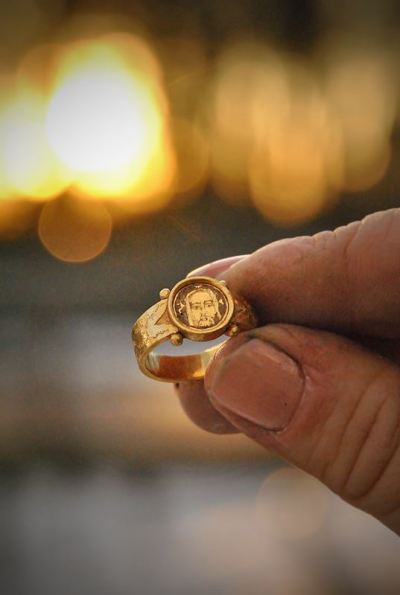Archaeologists find ancient ring with Jesus’ face inscribed in 'almost new condition'

A unique gold ring inscribed with the face of Jesus Christ, which may have been lost hundreds of years ago, was recently uncovered in great condition among 30,000 other medieval archeological objects in southeast Sweden.
Archaeologists working for the government's National Historical Museums agency announced the discoveries in the coastal city of Kalmar amid a longstanding excavation plan involving 50 medieval plots, about 10 streets and parts of the old city wall in Gamla Stan.
In addition to the rare jewelry that was found, there have also been hundreds of buildings, cellars, streets, latrines and everyday objects from 400 years ago, — approximately 1250 to 1650 — that have been recovered within a two-year time span in central Kalmar.
The excavations were conducted with the hope of renewing and expanding water and sewage pipes, which in some cases have impacted the remains of medieval buildings.
"In total, over 30,000 objects have been found. … It is very unusual for such large contiguous areas to be investigated in the middle of a city and the result is beyond all expectation," reads an announcement from The Archaeologists, an entity that operates under the umbrella of the National Historical Museums.
Magnus Stibéus, project manager of the Archaeologists, said the years of fulfilling the excavation plan led to advanced educational opportunities and resources for those conducting the studies on anything discovered.

"We have been able to lift the lid on the city's Middle Ages and have had the opportunity to study how people lived, what they ate and drank and how this changed over time," Stibéus said in a statement.
"Archeology becomes like a peephole into medieval history that allows us to learn more about how life was several hundred years ago."
The gold ring was one of two "spectacular" discoveries made before the dig's completion. Stibéus said researchers also found an alsengem, or small glass stone, believed to have been used as a pilgrim amulet.
"The gold ring was in almost new condition with a Christ motif and was found, like the alsengem, in contexts that we interpreted as waste storage. Probably someone was unlucky and lost the ring 500 years ago," Stibéus said. "The alsengemet is broken and may have been thrown away."
"The gold ring with the carved figure of Christ dates to the beginning of the 15th century. That type of ring may have been worn by a woman because it is quite small. Some similar rings have been found in Northern Finland, Östergötland and Uppland," Stibéus continued.
"The alsengem archaeologists have found in Kalmar dates to the 13th to 14th centuries and has three carved figures."
Other unique findings included remains of a rune stone that may have come from a burial mound in a cemetery in Kalmar in the 12th century.
A brick cat paw print was also unearthed, as were "traces of the Kalmar War in 1611."
Nicole VanDyke is a reporter for The Christian Post.




























